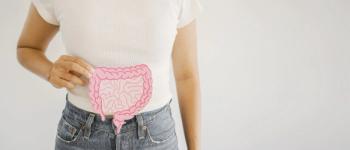
BIOHM, a novel probiotic formulation, fights a new foe called digestive plaque, SupplySide West 2019 report
BIOHM is a probiotic formula that combines good bacteria (Bifidobacterium breve, Lactobacillus acidophilus, Lactobacillus rhamnosus) and good fungi (Saccharomyces boulardii), with the enzyme amylase to break down digestive plaque and recondition the gut.
BIOHM is the
In an in vitro study published in Therapeutics and Prevention1, BIOHM was shown to prevent the formation of digestive plaque as well as significantly reduce the thickness of digestive plaque. The formula was devised by Mahmoud Ghannoum, PhD, MBA, FIDSA, Director of the Center for Medical Mycology at Case Western Reserve University and University Hospitals Cleveland Medical Center. Ghannoum chose components that would work synergistically in order to break down plaque, control the exposed bad bacteria and fungus, and then continue to inhibit the formation of plaque.
According to the authors of the study in Therapeutics and Prevention, amylase has been shown to inhibit the growth of digestive plaque, and S. boulardii has been shown in research to secrete fatty acids and 2-phenylethanol, including capric acid, a compound shown to be “most effective in inhibiting candidal pathogenicity determinants, including the yeast-to-hyphal morphological transition, adhesion, and biofilm formation.” They also write that “metabolites secreted by S. boulardii may contribute to the ability of our probiotic to interfere with the virulence factors of these pathogens.”
With regard to the probiotics, say the researchers, “Metabolites released by Lactobacillus species, such as sodium butyrate, have been shown to inhibit biofilm formation, to potentiate the effect of antifungal agents…thereby reducing fungal pathogenicity.” The production of lactic acid and other organic acids by Lactobacillus spp. also significantly decreases the pH in the gut, which is an important factor in fungal growth.
The health implications of the formula are significant because digestive plaque has been recognized as a primary contributor to host infections and gastrointestinal diseases such as Crohn’s disease.
References:
1. Hager CL et al. “Effects of a novel probiotic combination on pathogenic bacterial-fungal polymicrobial biofilms.” Therapeutics and Prevention, vol. 10, no. 2 (2019)
Newsletter
From ingredient science to consumer trends, get the intel you need to stay competitive in the nutrition space—subscribe now to Nutritional Outlook.





